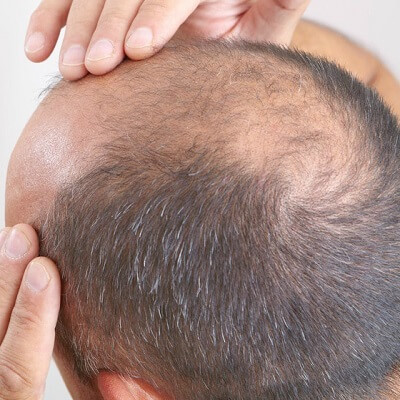Introduction to Stem Cell Hair Transplants
Stem Cell Hair Transplant represents a breakthrough in the field of hair restoration. Unlike traditional methods like hair plugs or strip harvesting, which can result in an unnatural appearance, stem cell transplants offer a more natural-looking outcome.
Understanding Natural-Looking Results
What Makes Results Look Natural?
Natural-looking hair restoration is characterized by hair that seamlessly blends with existing hair, both in terms of texture and direction.
Importance of Mimicking Natural Hair Growth Patterns
The key to achieving natural results lies in mimicking the natural growth patterns of hair. This involves careful placement of hair follicles to match the direction, angle, and density of existing hair.
How Stem Cell Hair Transplants Work
Explanation of Stem Cell Therapy
Stem cell therapy involves harvesting stem cells from the patient's own body, typically from adipose tissue or bone marrow. These stem cells are then processed and injected into the scalp to stimulate hair growth.
Process of Stem Cell Hair Transplantation
During the procedure, hair follicles are extracted from donor areas and implanted into balding or thinning areas of the scalp. The addition of stem cells enhances the viability and growth of transplanted hair follicles.
Benefits of Stem Cell Hair Transplants
Natural Appearance
One of the primary benefits of stem cell hair transplants is the natural appearance they provide. By using the patient's own cells, the risk of rejection is minimized, resulting in hair that looks and feels authentic.
Minimally Invasive Procedure
Compared to traditional hair restoration methods, stem cell transplants are minimally invasive, with shorter recovery times and reduced discomfort.
Long-lasting Results
Stem cell hair transplants offer long-lasting results, with many patients experiencing permanent hair growth in treated areas.
Who Can Benefit from Stem Cell Hair Transplants?
Suitable Candidates
Ideal candidates for stem cell hair transplants are those experiencing early-stage hair loss or thinning, as well as individuals seeking a natural-looking solution to hair loss.
Considerations for Different Hair Types
Stem cell hair transplants can benefit individuals with various hair types, including curly, straight, thick, or fine hair.
What to Expect During the Procedure
Consultation and Evaluation
Before undergoing a stem cell hair transplant, patients undergo a thorough consultation and evaluation to assess candidacy and discuss treatment goals.
Preparation and Anesthesia
On the day of the procedure, patients receive local anesthesia to ensure comfort during the process.
Stem Cell Implantation Process
Hair follicles are meticulously implanted into recipient sites on the scalp, following the natural hairline and density.
Recovery and Aftercare
Immediate Postoperative Care
Following the procedure, patients are provided with detailed instructions for postoperative care, including medication and follow-up appointments.
Long-term Maintenance
While stem cell hair transplants offer permanent results, maintaining overall scalp health through proper hygiene and nutrition is essential for long-term success.
Risks and Side Effects
Potential Risks
Although rare, potential risks associated with stem cell hair transplants include infection, bleeding, or allergic reactions.
Mitigation Strategies
To minimize risks, it's crucial to choose a qualified and experienced provider and follow postoperative care instructions diligently.
Success Rates and Patient Satisfaction
Research Findings
Studies have shown promising results with stem cell hair transplants, with high success rates and patient satisfaction.
Testimonials from Patients
Many individuals who have undergone stem cell hair transplants report significant improvements in hair density and overall appearance.
Comparing Stem Cell Hair Transplants with Traditional Methods
Effectiveness
Compared to traditional methods, stem cell hair transplants offer superior effectiveness in achieving natural-looking results.
Convenience
The minimally invasive nature of stem cell transplants makes them a more convenient option for patients seeking hair restoration.
Cost Considerations
While the initial cost of stem cell hair transplants may be higher than traditional methods, the long-term benefits and natural results often outweigh the investment.
The Future of Hair Restoration with Stem Cell Technology
Ongoing Research and Advancements
Continued research and advancements in stem cell technology hold promise for further improving the efficacy and accessibility of hair restoration treatments
Potential Innovations
Future innovations may include enhanced techniques for stem cell isolation and delivery, as well as personalized treatment approaches tailored to individual patient needs.
Conclusion
Stem Cell Hair Transplant in Riyadh offers a revolutionary solution for individuals seeking natural-looking results in hair restoration. With advancements in technology and ongoing research, the future of hair restoration looks brighter than ever.






Comments